 W
WKarel Ančerl was a Czechoslovak conductor and composer, renowned especially for his performances of contemporary music and for his interpretations of music by Czech composers.
 W
WInge Auerbacher is an American chemist of German origin. She is a survivor of the Holocaust and has published many books about her experiences in the Second World War.
 W
WYehuda Bacon is an Israeli artist who survived the Holocaust.
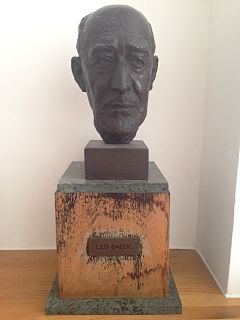 W
WLeo Baeck was a 20th-century German rabbi, scholar and theologian. He served as leader of Reform Judaism in his native country and internationally, and later represented all German Jews during the Nazi era. After the Second World War, he settled in London, UK, where he served as the chairman of the World Union for Progressive Judaism.
 W
WAnka Bergman was a Czech Holocaust survivor noted for giving birth to Eva Clarke whilst at Mauthausen concentration camp.
 W
WPavel Bergmann was a Czech historian, philosopher, a signatory of the Charter 77 manifesto, and a founding member of the Civic Forum.
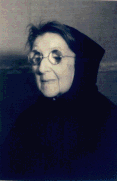 W
WElsa Bernstein was an Austrian-German writer, dramatist, and literary figure.
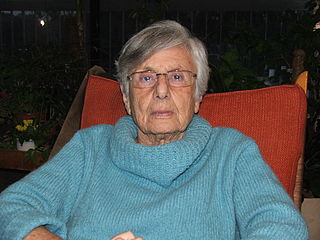 W
WRuth Bondy was a Czech-Israeli journalist and translator. Bondy was a Holocaust survivor who wrote for the Israeli newspaper Davar and translated books written in Czech to Hebrew. She was awarded the Sokolov Award in 1987 and the Tchernichovsky Prize in 2014.
 W
WGeorge Jiri Brady was a Holocaust survivor of both Theresienstadt (Terezín) and Auschwitz, who became a businessman in Canada and was awarded the Order of Ontario in 2008.
 W
WDavid Brodman was a Dutch-Israeli rabbi and peace activist.
 W
WEmil František Burian was a Czech poet, journalist, singer, actor, musician, composer, dramatic adviser, playwright and director. He was also active in Communist Party of Czechoslovakia politics.
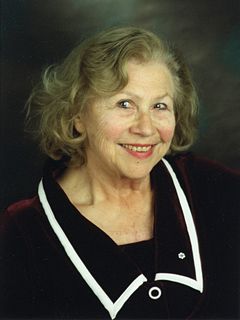 W
WEllen Burka was a Canadian-Dutch figure skater and coach. She became Member of the Order of Canada in 1978 and was inducted into Canada's Sports Hall of Fame in 1996.
 W
WIrene Capek was a Jewish Holocaust survivor, humanitarian and local Australian politician. She was the fourth ever female member of the Caulfield City Council, was the recipient of the Caulfield City Council Citizen of the Year award, and went on to become a Member of the Order of the British Empire (MBE).
 W
WDavid Cohen was a Dutch classicist and papyrologist and one of the two chairs of the Jewish Council during the Second World War. He was Professor of Ancient History at the University of Amsterdam and a prominent Zionist leader.
 W
WCordelia Maria Edvardson was a German-born Swedish journalist, author and Holocaust survivor. She was the Jerusalem correspondent for Svenska Dagbladet, a Swedish daily newspaper, from 1977 to 2006. Edvardson reported extensively on the Israeli–Palestinian conflict, remaining a columnist for Svenska Dagbladet after leaving her post in 2006.
 W
WArthur Eichengrün was a German Jewish chemist, materials scientist, and inventor. He is known for developing the highly successful anti-gonorrhea drug Protargol, the standard treatment for 50 years until the adoption of antibiotics, and for his pioneering contributions in plastics: co-developing the first soluble cellulose acetate materials in 1903, called "Cellit", and creating processes for the manufacture of these materials which were influential in the development of injection moulding. During World War I his relatively non-flammable synthetic cellulose acetate lacquers, marketed under the name "Cellon", were important in the aircraft industry. He contributed to photochemistry by inventing the first process for the production and development of cellulose acetate film, which he patented with Becker.
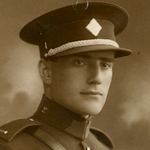 W
WKurt Epstein was a Czechoslovakian Olympic water polo player and survivor of Nazi concentration camps.
 W
WMaurice Frankenhuis was a Jewish Dutch businessman, historian, researcher, author, collector, numismatist, Holocaust survivor, and philanthropist. He documented the history of World War I and World War II through his family's experiences in the Netherlands and subsequent internment in two concentration camps. Throughout the ordeal he built a collection of memorabilia and authored a firsthand account to the Holocaust of Dutch Jewry. He dedicated himself to educating about the Holocaust, and preserve a record of history for future generations including donations of his collections of medals and posters to various museums around the world, and writing his personal memoirs, observations and commentary on world affairs after the war.
 W
WViktor Emil Frankl was an Austrian neurologist, psychiatrist, philosopher, author, and Holocaust survivor.
 W
WMax Friediger was a Danish chief rabbi and a survivor of the Holocaust.
 W
WNorbert Frýd was a Czech writer, journalist and diplomat. He is known mainly for his autobiographical novel Krabice živých, in which he describes his experiences in Nazi concentration camps. During World War II, he was imprisoned in the Theresienstadt, Auschwitz and Dachau-Kaufering concentration camps.
 W
WJaro Fürth was an Austrian stage and film actor.
 W
WRudolf Gelbard was an Austrian Holocaust survivor and political campaigner against anti-Semitism and neo-Nazism. He lectured in schools and universities about his experiences during the Holocaust, and also appeared in a 2007 documentary film about his experiences.
 W
WErnst Grube is a German teacher and Holocaust survivor. He never tires of presenting - "up to a hundred times a year" - the story of his childhood in Nazi Germany. In contrast, he speaks very little of what happened after his release from the Theresienstadt concentration camp and his return to Munich in May 1945: his involvement with the FDJ and the Communist Party itself during the period when it had been banned in West Germany. His trades union activism, his campaigning against re-armament during the 1950s and in favour of reunification receive little coverage. Several times his activism led him to violent police encounters and arrest. A leafleting campaign he undertook for the (illegal) Communist Party led to several months of solitary confinement and a conviction from a federal court.
 W
WLeo Haas was a German painter, graphic artist, draughtsman and caricaturist.
 W
WArek Hersh,, is a survivor of the Holocaust.
 W
WAlice Herz-Sommer, also known as Alice Herz, was a Prague-born Jewish classical pianist, music teacher, and supercentenarian who survived Theresienstadt concentration camp. She lived for 40 years in Israel, before migrating to London in 1986, where she resided until her death, and at the age of 110 was the world's oldest known Holocaust survivor until Yisrael Kristal was recognized as such.
 W
WLeo Holzer was an Austrian-Czech firefighter and Holocaust survivor best known for leading the fire brigade inside Theresienstadt concentration camp, which he used as a cover for resistance activities. After the war, he remained in communist Czechoslovakia and became an advocate for Czech-German reconciliation.
 W
WHelga Hošková-Weissová, also Helga Weiss, is a Czech artist, and a Holocaust survivor. She is known for her drawings that depict life at Terezín and her diary, which was published in 2013.
 W
WMiroslav Kárný was an historian and writer from Prague, Czechoslovakia.
 W
WMeijer Joseph "Mike" Keyzer was a Dutch politician and diplomat of the People's Party for Freedom and Democracy (VVD).
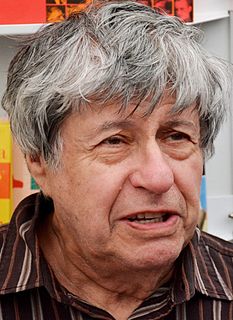 W
WIvan Klíma is a Czech novelist and playwright. He has received the Magnesia Litera award and the Franz Kafka Prize, among other honors.
 W
WRuth Klüger was Professor Emerita of German Studies at the University of California, Irvine and a Holocaust survivor. She was the author of the bestseller weiter leben: Eine Jugend about her childhood in the Third Reich.
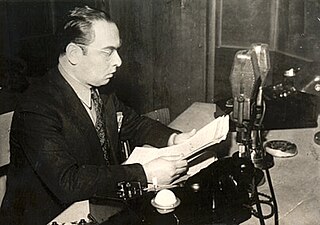 W
WFrantišek R. Kraus was a Czechoslovak Jewish anti-fascist writer, journalist and editor, member of the resistance movement, sportsman and a known Czech holocaust survivor.
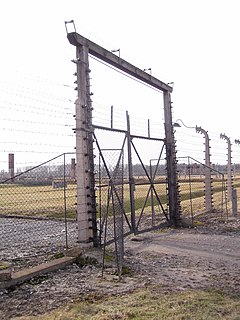 W
WOn the night of 5 April 1944, Siegfried Lederer, a Czech Jew, escaped from the Auschwitz concentration camp wearing an SS uniform provided by SS-Rottenführer Viktor Pestek. Pestek opposed the Holocaust; he was a devout Catholic and was infatuated with Renée Neumann, a Jewish prisoner. He accompanied Lederer out of the camp, and the two men traveled together to the Protectorate of Bohemia and Moravia to obtain false documents for Neumann and her mother.
 W
WHelen Lewis MBE was a pioneer of modern dance in Northern Ireland, and made her name as a dance teacher and choreographer. A survivor of the Holocaust, she was also known for her memoir of her experiences during the Second World War.
 W
WArnošt Lustig was a renowned Czech Jewish author of novels, short stories, plays, and screenplays whose works have often involved the Holocaust.
 W
WHerbert Thomas Mandl was a Czechoslovak-German-Jewish author, concert violinist, professor of music, philosopher, inventor and lecturer. He authored novels, stories and dramas that are inspired by the extraordinary events of his life.
 W
WRudolf (Rudi) Masarek was a Czech prisoner of the Treblinka extermination camp and a prominent member of the Treblinka prisoner uprising. Deported from the Theresienstadt concentration camp to Treblinka on 8 October 1942, Masarek was killed during that camp's prisoner uprising on 2 August 1943.
 W
WAlfred Hirsch was a German-Jewish athlete, sports teacher and Zionist youth movement leader, notable for helping thousands of Jewish children during the German occupation of Czechoslovakia in Prague, Theresienstadt concentration camp, and Auschwitz. Hirsch was the deputy supervisor of children at Theresienstadt and the supervisor of the children's block at the Theresienstadt family camp at Auschwitz II-Birkenau.
 W
WEduard Maurits Meijers was a Dutch jurist of Jewish background, who was the founding father of the current Dutch civil code, the Nieuw Burgerlijk Wetboek.
 W
WAlfréd Meissner was a Czechoslovak politician and member of the Social Democratic Party in the First Czechoslovak Republic. He was elected to the National Assembly and served twice as Minister of Justice and twice as Minister of Social Welfare of the republic. Following the German occupation of Czechoslovakia during the Second World War, he was deported to the Theresienstadt concentration camp. He survived the Holocaust, and after the war he returned to Prague where he died at the age of 79.
 W
WLéon Meyer was a French freight broker and Radical politician from the port city of Le Havre. He was mayor of Le Havre from 1919 to 1941, and a national deputy from 1923 to 1941. He was Minister of Merchant Marine in 1932–33. As a Jew he was removed from office during World War II (1939–45), and in 1944 was deported and spent 17 months in concentration camps.
 W
WMartha Mosse was a German lawyer who was Prussia's first female teacher at the Berlin Police Headquarters. Because of her Jewish origin, she was given a professional ban during Germany's period under Nazi government and deported in 1943 to the ghetto Theresienstadt, a concentration camp in the Protectorate of Bohemia and Moravia. Mosse survived the Holocaust and was a witness in the Nuremberg trials.
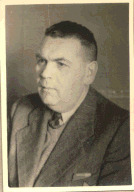 W
WBenjamin Israel Murmelstein was an Austrian rabbi. He was one of 17 community rabbis in Vienna in 1938 and the only one remaining in Vienna by late 1939. An important figure and board member of the Jewish group in Vienna during the early stages of the war, he was also an "Ältester" of the Judenrat in the Theresienstadt concentration camp after 1943. He was the only "Judenältester" to survive the Holocaust and has been credited with saving the lives of thousands of Jews by assisting in their emigration, while also being accused of being a Nazi collaborator.
 W
WPavel Oliva, born Pavel Ohrenstein was a Czech classical philologist, historian of antiquity, writer, and Holocaust survivor.
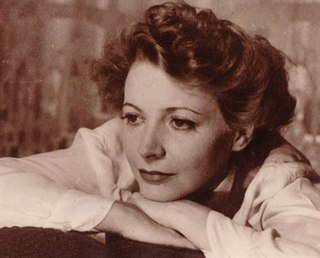 W
WHana Maria Pravda was a Czech-British actress.
 W
WOn the night of 5 April 1944, Siegfried Lederer, a Czech Jew, escaped from the Auschwitz concentration camp wearing an SS uniform provided by SS-Rottenführer Viktor Pestek. Pestek opposed the Holocaust; he was a devout Catholic and was infatuated with Renée Neumann, a Jewish prisoner. He accompanied Lederer out of the camp, and the two men traveled together to the Protectorate of Bohemia and Moravia to obtain false documents for Neumann and her mother.
 W
WHeinz Jakob "Coco" Schumann was a German jazz musician and Holocaust survivor. He became a member of the Ghetto Swingers while transported to Theresienstadt at the age of nineteen. In the aftermath of the Holocaust, Schumann performed as a jazz guitarist, with Marlene Dietrich, Ella Fitzgerald, and Helmut Zacharias.
 W
WIda Simons was a Belgian-born Dutch concert pianist and writer, best known for her novel A Foolish Virgin.
 W
WJoseph Eduard Adolf Spier was a popular Dutch artist and illustrator.
 W
WEla Stein-Weissberger was a Czech holocaust survivor who became well known for her roles as a contemporary witness and intelligence officer for the Israel Defense Forces. In her later years she traveled the world discussing her time in concentration camps during World War II. She even wrote about her experiences in a book titled The Cat with the Yellow Star: Coming of Age in Terezin.
 W
WJohn Michael Steiner was a Czech-American Sociologist and Holocaust researcher.
 W
WAnne-Lise Stern was a French psychoanalyst and Holocaust survivor.
 W
WAlina Szapocznikow (Polish: [ʂapɔt͡ʂˈɲikɔf]; sometimes called Szaposznikow; was a Polish sculptor and Holocaust survivor. She produced casts of her and her son's body. She worked mainly in bronze and stone and her provocative work recalled genres such as surrealism, nouveau realism, and pop art.
 W
WMartinus (Tinus) Tels was a Dutch physicist and chemical engineer. He was a professor of chemical engineering, dean of the department of chemical engineering and the ninth rector magnificus of the Eindhoven University of Technology.
 W
WBertha Thalheimer was a German left-wing peace activist who became a politician (KPD).